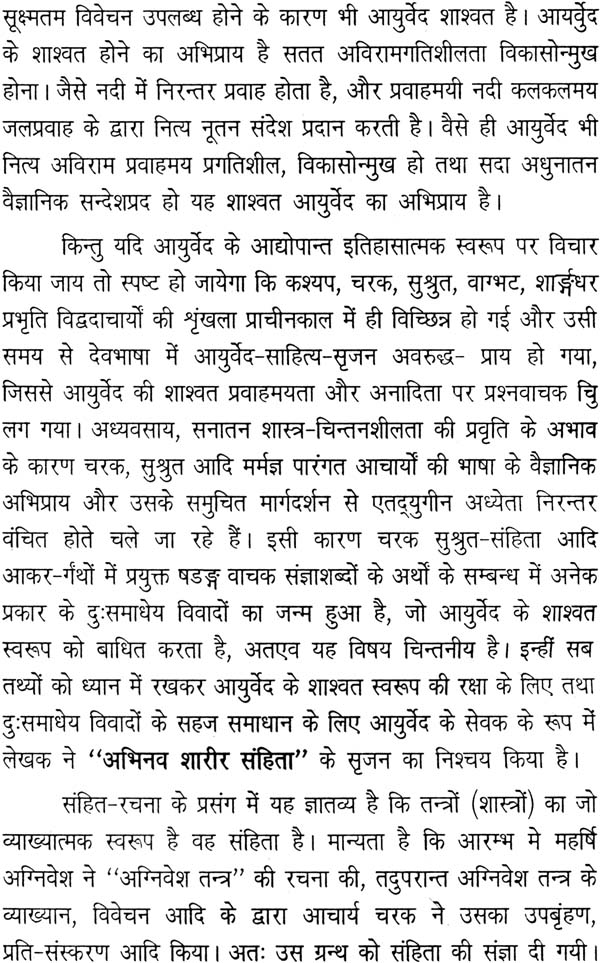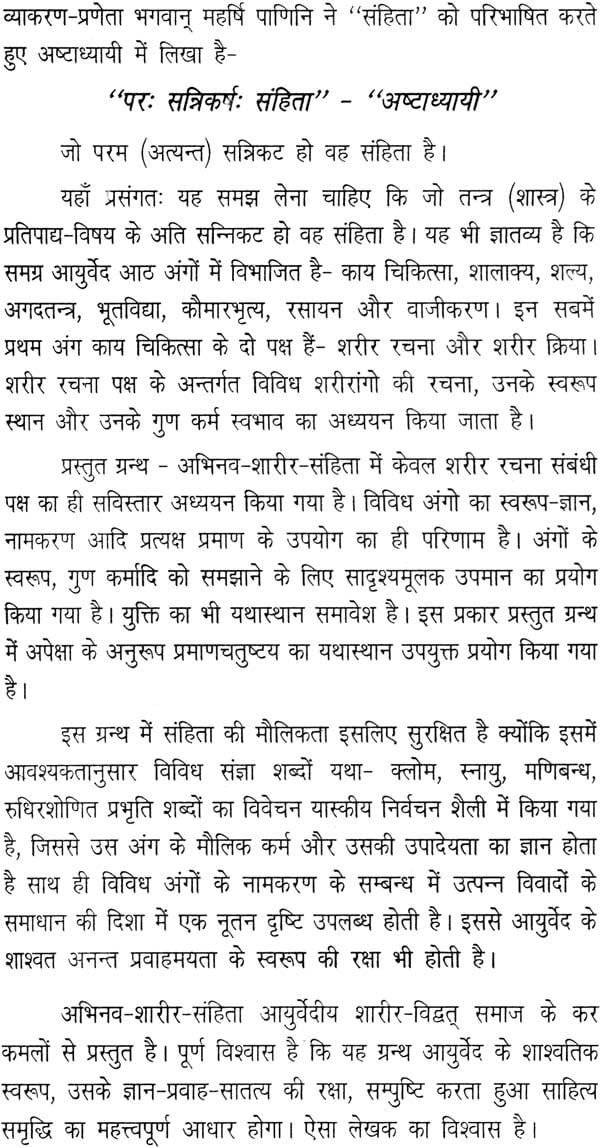
अभिनव शारीर संहिता (संस्कृत एवं हिन्दी अनुवाद)- Abhinava Sarira Samhita785875898514
Book Specification
| Item Code: | NZF989 |
| Author: | प्रो. दिनकर गोविन्द थत्ते (Prof. Dinakar Govind Thatte) |
| Publisher: | Rashtriya Sanskrit Sansthan, Janakpuri |
| Language: | Sanskrit Text With Hindi Translation |
| Edition: | 2007 |
| ISBN: | 8186111417 |
| Pages: | 480 |
| Cover: | Hardcover |
| Other Details | 8.5 inch X 6.0 inch |
| Weight | 690 gm |
Book Description

I am delighted to write a few lines as preface to the work entitled “Abhinava Sharira Samhita” written by Prof. Dinkar Gobind Thatte along with Hindi translation. In this book which is written in loose knitted verses, Dr. Thatte made commendable effort to cull down Sanskrit technical terms from various Ayurvedic texts and to show them with their equivalent in the present day medical science. He has also made remarkable effort to coin new Sanskrit technical term as equivalent to Modern English term on the basis of Ayurvedic usages, etymology and Sanskrit grammar. While Prof. Thatte deserves rich complements for the up-hill task he has completed it remains as a pointer to the fact that Sanskrit language can generate number of technical terms to denote modern scientific terminology. Indeed among the Indian languages Sanskrit alone has got this potentiality of coining new words equivalent to technical and scientific terminology of English and other Modern Indian Languages. I am extremely happy to publish this work under the Sansthan’s Independence Golden Jubilee Series as such interdisciplinary efforts are most desirable in Sanskrit studies. As this is the pioneering efforts, scholars are welcome to give us their opinion and suggestions so that they can be carried on in the second edition. The meter adopted for the verses is sometimes violative of prescription. However taking into consideration of modern technical nature of the work such violations can be tolerated. Abhinava Sharira Samhita once again attested the relevance of Sanskrit language in the present age and ages to come. I hope the present work will receive due appreciation from students and scholars of Ayurveda.










